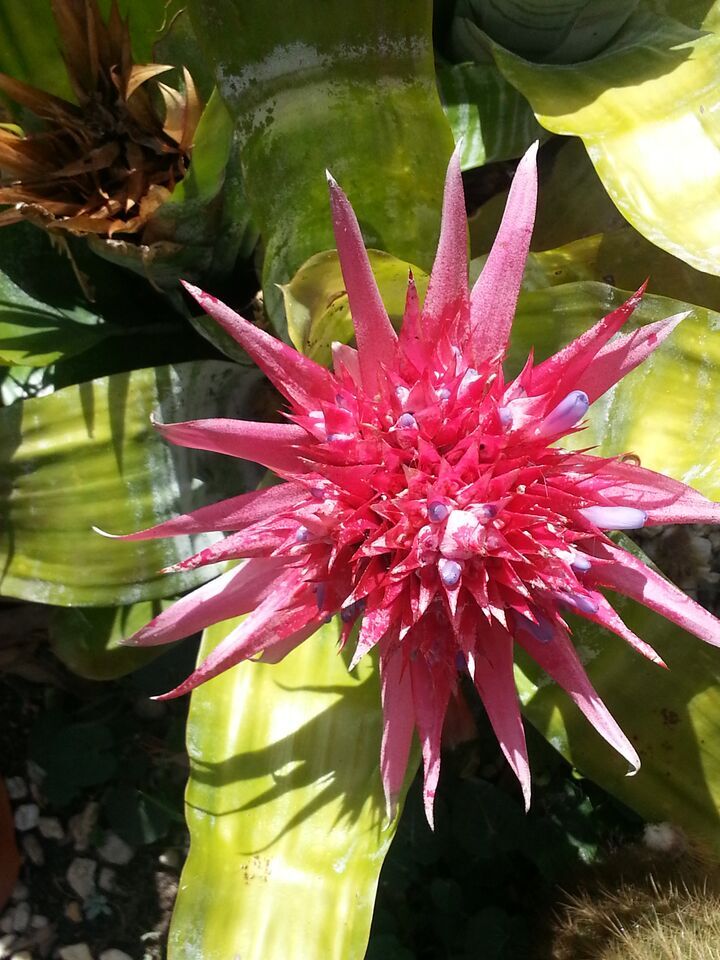
Greek aichme – lance head, refers to the spiny points of the floral bracts and sepals.
Stemless epiphytes often with short runners. Leaves usually forming a funnel or tube although sometimes a dense rosette, usually spiny margined with a rounded tip terminating in a short spine. Leaves frequently cross-banded or spotted. Inflorescence well developed and either simple or branched. Floral bracts and sepals brightly coloured and sharply pointed. Petals not fused and usually with basal ligules. Ovary inferior. Fruit a fleshy, usually brightly coloured, berry.
Aechmea is an extremely variable genus that has been unclearly defined. Since 1979 a number of new genera e.g. Lymania, Ursulaea have been segregated. Aechmea is dealt with here in the broad sense. Streptocalyx has recently been included in Aechmea. Species belonging here are quite rare south of Sydney, however S. poeppigii (A. beeriana) or S. biflorus (A. biflora) may be encountered.
The following subgenera are recognised:
By seed or offsets from the basal runners. Name pronounced Eek-me-a.
Approximately 170 species from C and S America and the W Indies, with a centre of distribution in Brazil.
Mostly as cultivated ornamentals however some yield fibre from the leaves for rope, twine etc.
Crossbanded or spotted leaves forming a funnel or tube, spiny margins; brightly coloured floral bracts and sepals; fleshy brightly coloured berry.
Keys: There is a key to the subgenera and keys for the subgenera.
Ligulate (strap-shaped) and leathery leaves: Inflorescence simple and dense: blumenavii, calyculata, comata, cylindrata
Inflorescence simple and lax: apocalyptica, gamosepala, kertesziae
Inflorescence branched at the base: candida, caudata, coelestis, gracilis, organensis, winkleri
Source: (2005). Bromeliaceae. In: . Horticultural Flora of South-eastern Australia. Volume 5. Flowering plants. Monocotyledons. The identification of garden and cultivated plants. University of New South Wales Press.
